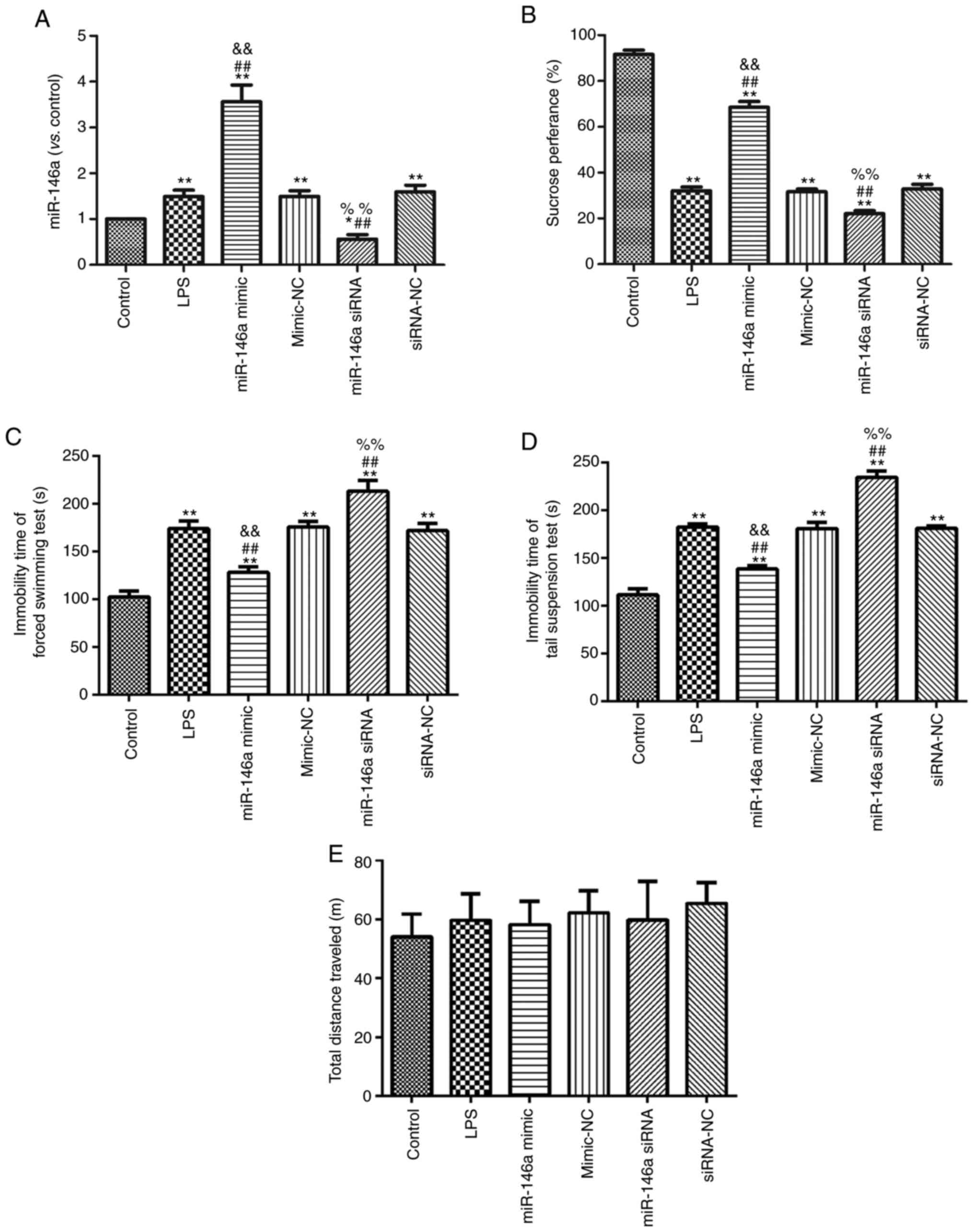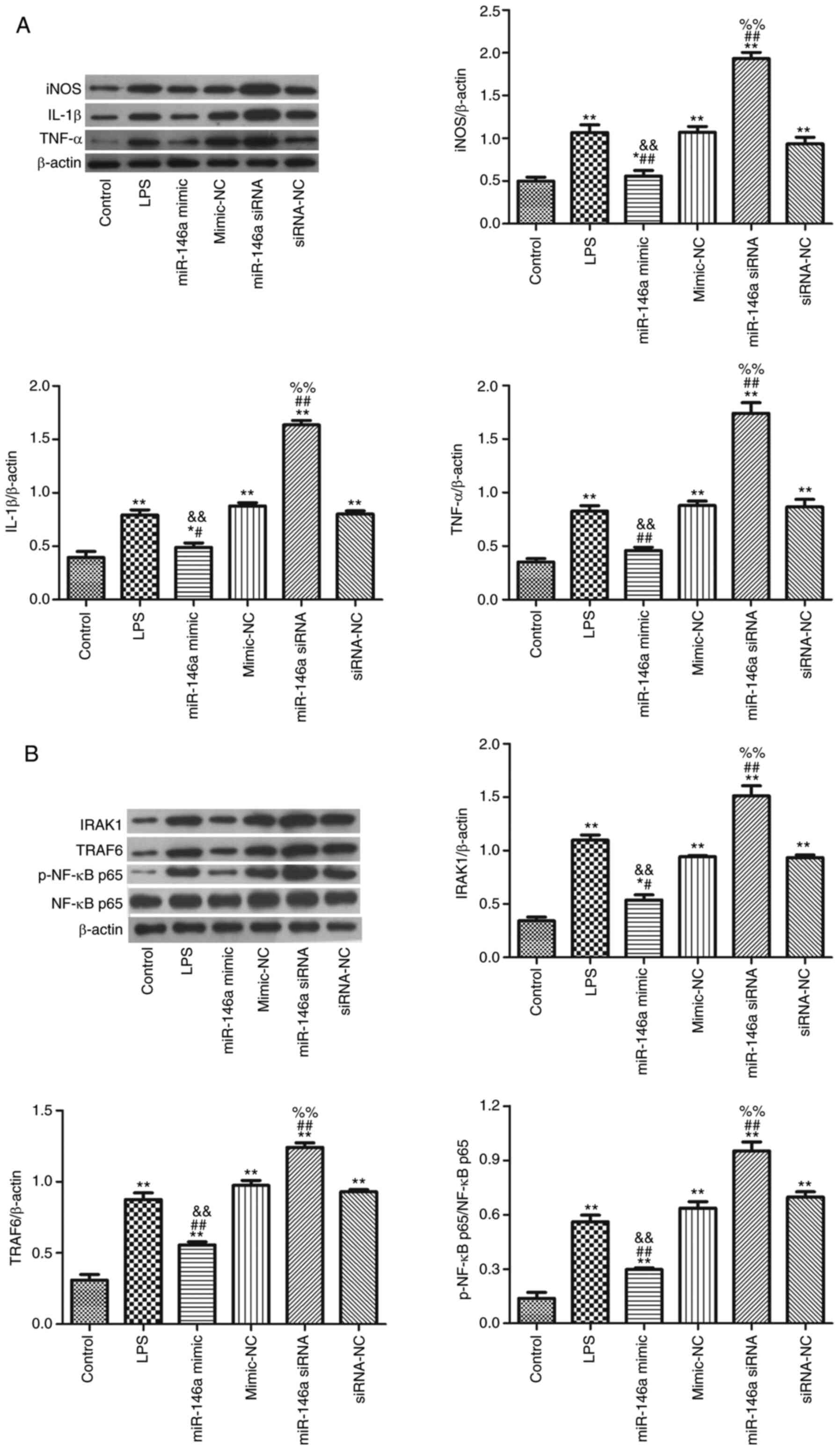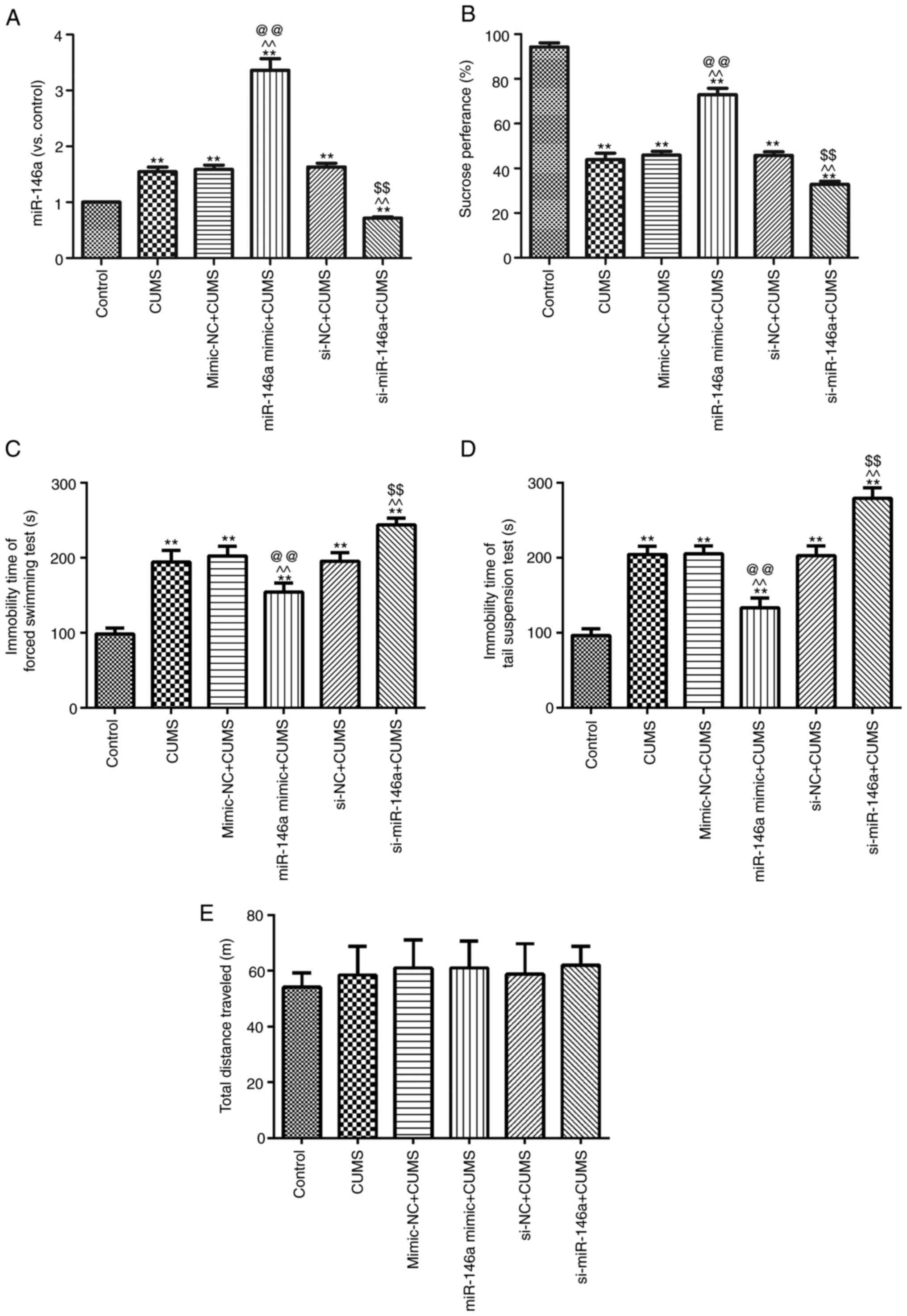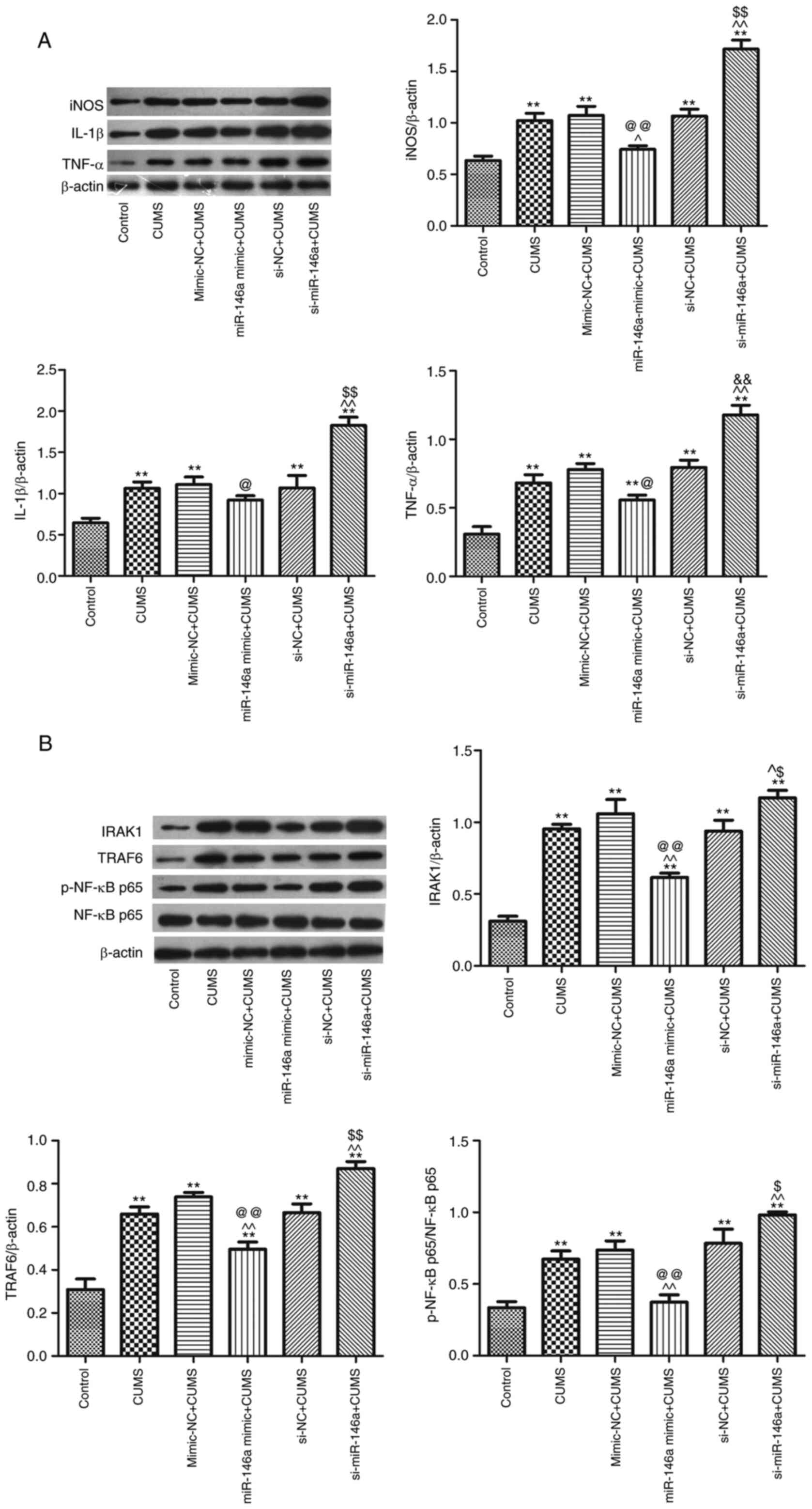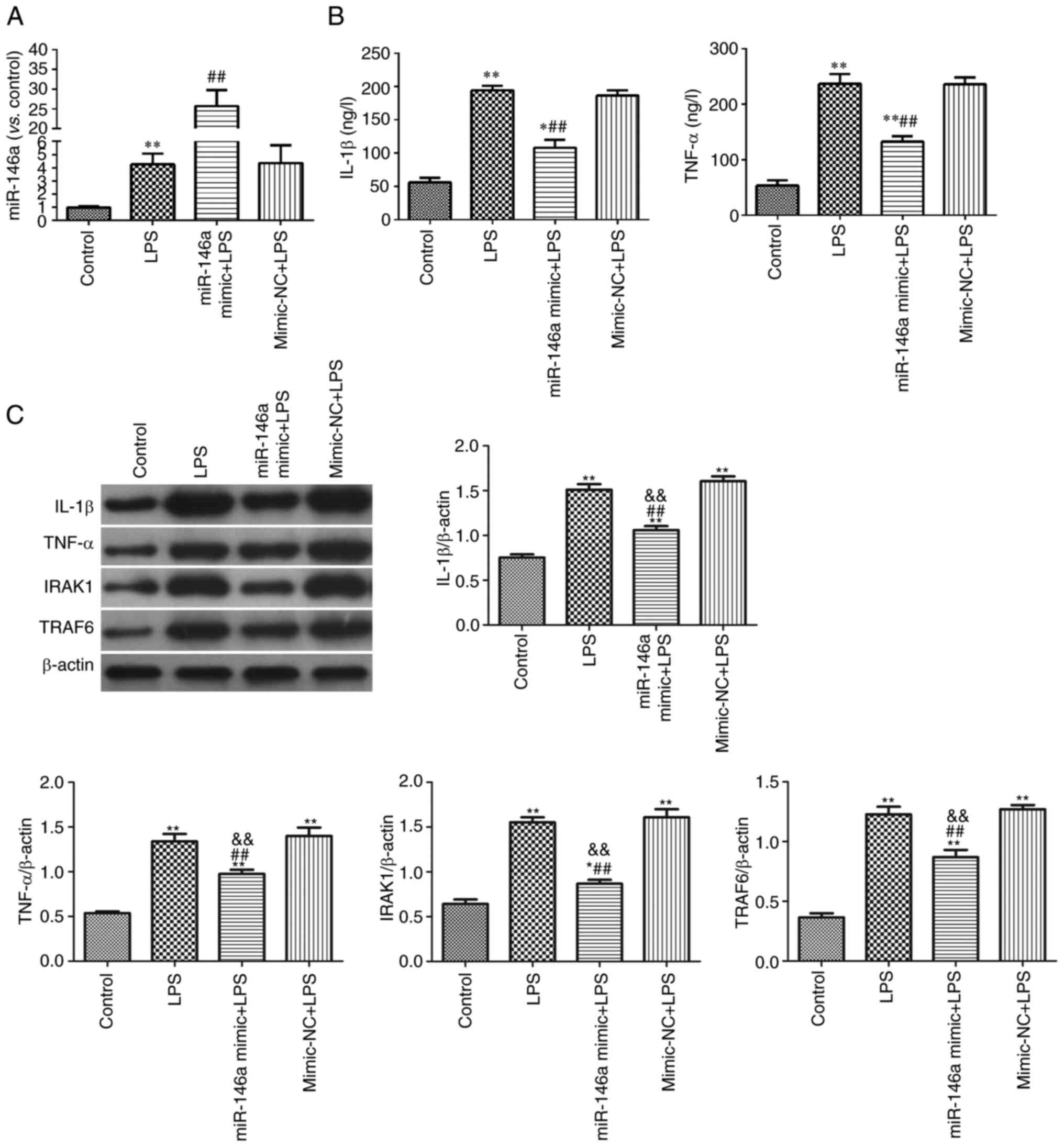|
1
|
Carlessi AS, Borba LA, Zugno AI, Quevedo J
and Reus GZ: Gut-microbiota-brain axis in depression: The role of
neuroinflammation. Eur J Neurosci. 53:222–235. 2021. View Article : Google Scholar : PubMed/NCBI
|
|
2
|
Amidfar M, Reus GZ, Quevedo J and Kim YK:
The role of memantine in the treatment of major depressive
disorder: Clinical efficacy and mechanisms of action. Eur J
Pharmacol. 827:103–111. 2018. View Article : Google Scholar : PubMed/NCBI
|
|
3
|
Shibata M and Suzuki N: Exploring the role
of microglia in cortical spreading depression in neurological
disease. J Cereb Blood Flow Metab. 37:1182–1191. 2017. View Article : Google Scholar : PubMed/NCBI
|
|
4
|
Yirmiya R, Rimmerman N and Reshef R:
Depression as a microglial disease. Trends Neurosci. 38:637–658.
2015. View Article : Google Scholar : PubMed/NCBI
|
|
5
|
Zhou S, Chen S, Xie W, Guo X and Zhao J:
Microglia polarization of hippocampus is involved in the mechanism
of Apelin-13 ameliorating chronic water immersion restraint
stress-induced depression-like behavior in rats. Neuropeptides.
81:1020062020. View Article : Google Scholar : PubMed/NCBI
|
|
6
|
Mikita J, Dubourdieu-Cassagno N, Deloire
MS, Vekris A, Biran M, Raffard G, Brochet B, Canron MH, Franconi
JM, Boiziau C and Petry KG: Altered M1/M2 activation patterns of
monocytes in severe relapsing experimental rat model of multiple
sclerosis. Amelioration of clinical status by M2 activated monocyte
administration. Mult Scler. 17:2–15. 2011. View Article : Google Scholar : PubMed/NCBI
|
|
7
|
Tobon-Velasco JC, Cuevas E and
Torres-Ramos MA: Receptor for AGEs (RAGE) as mediator of NF-κB
pathway activation in neuroinflammation and oxidative stress. CNS
Neurol Disord Drug Targets. 13:1615–1626. 2014. View Article : Google Scholar : PubMed/NCBI
|
|
8
|
Hui B, Zhang L, Zhou Q and Hui L:
Pristimerin inhibits LPS-triggered neurotoxicity in BV-2 Microglia
cells through modulating IRAK1/TRAF6/TAK1-Mediated NF-κB and AP-1
signaling pathways in vitro. Neurotox Res. 33:268–283. 2018.
View Article : Google Scholar : PubMed/NCBI
|
|
9
|
Testa U, Pelosi E, Castelli G and Labbaye
C: miR-146 and miR-155: Two key modulators of immune response and
tumor development. Noncoding RNA. 3:222017.PubMed/NCBI
|
|
10
|
Taganov KD, Boldin MP, Chang KJ and
Baltimore D: NF-kappaB-dependent induction of microRNA miR-146, an
inhibitor targeted to signaling proteins of innate immune
responses. Proc Natl Acad Sci USA. 103:12481–12486. 2006.
View Article : Google Scholar : PubMed/NCBI
|
|
11
|
He X, Zheng Y, Liu S, Shi S, Liu Y, He Y,
Zhang C and Zhou X: MiR-146a protects small intestine against
ischemia/reperfusion injury by down-regulating TLR4/TRAF6/NF-κB
pathway. J Cell Physiol. 233:2476–2488. 2018. View Article : Google Scholar : PubMed/NCBI
|
|
12
|
Loubaki L, Chabot D, Pare I, Drouin M and
Bazin R: MiR-146a potentially promotes IVIg-mediated inhibition of
TLR4 signaling in LPS-activated human monocytes. Immunol Lett.
185:64–73. 2017. View Article : Google Scholar : PubMed/NCBI
|
|
13
|
Deng M, Du G, Zhao J and Du X: miR-146a
negatively regulates the induction of proinflammatory cytokines in
response to Japanese encephalitis virus infection in microglial
cells. Arch Virol. 162:1495–1505. 2017. View Article : Google Scholar : PubMed/NCBI
|
|
14
|
Sharma N, Verma R, Kumawat KL, Basu A and
Singh SK: miR-146a suppresses cellular immune response during
Japanese encephalitis virus JaOArS982 strain infection in human
microglial cells. J Neuroinflammation. 12:302015. View Article : Google Scholar : PubMed/NCBI
|
|
15
|
Ren Z, Yan P, Zhu L, Yang H, Zhao Y, Kirby
BP, Waddington JL and Zhen X: Dihydromyricetin exerts a rapid
antidepressant-like effect in association with enhancement of BDNF
expression and inhibition of neuroinflammation. Psychopharmacology
(Berl). 235:233–244. 2018. View Article : Google Scholar : PubMed/NCBI
|
|
16
|
Chen L, Dong R, Lu Y, Zhou Y, Li K, Zhang
Z and Peng M: MicroRNA-146a protects against cognitive decline
induced by surgical trauma by suppressing hippocampal
neuroinflammation in mice. Brain Behav Immun. 78:188–201. 2019.
View Article : Google Scholar : PubMed/NCBI
|
|
17
|
Singhal G and Baune BT: Microglia: An
interface between the loss of neuroplasticity and depression. Front
Cell Neurosci. 11:2702017. View Article : Google Scholar : PubMed/NCBI
|
|
18
|
Ma K, Guo L, Xu A, Cui S and Wang JH:
Molecular mechanism for stress-induced depression assessed by
sequencing miRNA and mRNA in medial prefrontal cortex. PLoS One.
11:e01590932016. View Article : Google Scholar : PubMed/NCBI
|
|
19
|
Ma K, Xu A, Cui S, Sun MR, Xue YC and Wang
JH: Impaired GABA synthesis, uptake and release are associated with
depression-like behaviors induced by chronic mild stress. Transl
Psychiatry. 6:e9102016. View Article : Google Scholar : PubMed/NCBI
|
|
20
|
Strekalova T, Couch Y, Kholod N, Boyks M,
Malin D, Leprince P and Steinbusch HM: Update in the methodology of
the chronic stress paradigm: Internal control matters. Behav Brain
Funct. 7:92011. View Article : Google Scholar : PubMed/NCBI
|
|
21
|
Rupniak NM, Carlson EJ, Webb JK, Harrison
T, Porsolt RD, Roux S, de Felipe C, Hunt SP, Oates B and Wheeldon
A: Comparison of the phenotype of NK1R-/- mice with pharmacological
blockade of the substance P (NK1) receptor in assays for
antidepressant and anxiolytic drugs. Behav Pharmacol. 12:497–508.
2001. View Article : Google Scholar : PubMed/NCBI
|
|
22
|
Zomkowski AD, Santos AR and Rodrigues AL:
Putrescine produces antidepressant-like effects in the forced
swimming test and in the tail suspension test in mice. Prog
Neuropsychopharmacol Biol Psychiatry. 30:1419–1425. 2006.
View Article : Google Scholar : PubMed/NCBI
|
|
23
|
Nishida S, Araki R, Baba A, Asari S,
Tachibana S, Nakajima Y, Iwakumo A and Yabe T: Post-weaning folate
deficiency induces a depression-like state via neuronal immaturity
of the dentate gyrus in mice. J Pharmacol Sci. 143:97–105. 2020.
View Article : Google Scholar : PubMed/NCBI
|
|
24
|
Livak JK and Schmittgen TD: Analysis of
relative gene expression data using quantitative PCR and the
2(-Delta Delta C(T)) method. Methods. 25:402–408. 2001. View Article : Google Scholar : PubMed/NCBI
|
|
25
|
Leff-Gelman P, Mancilla-Herrera I,
Flores-Ramos M, Cruz-Fuentes C, Reyes-Grajeda JP, García-Cuétara
Mdel P, Bugnot-Pérez MD and Pulido-Ascencio DE: The immune system
and the role of inflammation in perinatal depression. Neurosci
Bull. 32:398–420. 2016. View Article : Google Scholar : PubMed/NCBI
|
|
26
|
Robson MJ, Quinlan MA and Blakely RD:
Immune system activation and depression: Roles of serotonin in the
central nervous system and periphery. ACS Chem Neurosci. 8:932–942.
2017. View Article : Google Scholar : PubMed/NCBI
|
|
27
|
Ronovsky M, Berger S, Zambon A, Reisinger
SN, Horvath O, Pollak A, Lindtner C, Berger A and Pollak DD:
Maternal immune activation transgenerationally modulates maternal
care and offspring depression-like behavior. Brain Behav Immun.
63:127–136. 2017. View Article : Google Scholar : PubMed/NCBI
|
|
28
|
Kim YK, Na KS, Myint AM and Leonard BE:
The role of pro-inflammatory cytokines in neuroinflammation,
neurogenesis and the neuroendocrine system in major depression.
Prog Neuropsychopharmacol Biol Psychiatry. 64:277–284. 2016.
View Article : Google Scholar : PubMed/NCBI
|
|
29
|
Mai H, Fan W, Wang Y, Cai Y, Li X, Chen F,
Chen X, Yang J, Tang P, Chen H, et al: Intranasal administration of
miR-146a agomir rescued the pathological process and cognitive
impairment in an AD mouse model. Mol Ther Nucleic Acids.
18:681–695. 2019. View Article : Google Scholar : PubMed/NCBI
|
|
30
|
Li H, Linjuan L and Wang Y: G-CSF improves
CUMS-induced depressive behaviors through downregulating
Ras/ERK/MAPK signaling pathway. Biochem Biophys Res Commun.
479:827–832. 2016. View Article : Google Scholar : PubMed/NCBI
|
|
31
|
Bollinger JL and Wohleb ES: The formative
role of microglia in stress-induced synaptic deficits and
associated behavioral consequences. Neurosci Lett. 711:1343692019.
View Article : Google Scholar : PubMed/NCBI
|















